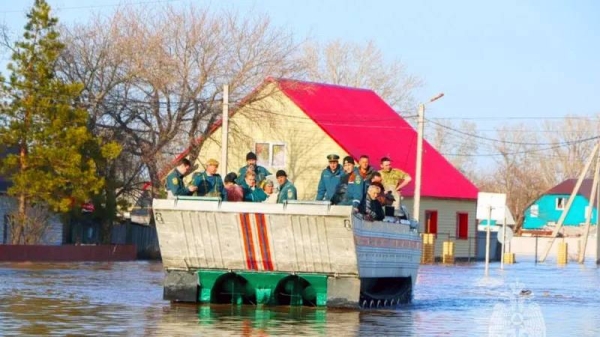
SYDNEY — More than 18,000 people have been evacuated from their homes in Australia"s New South Wales (NSW) as heavy rains and major flooding continue to inundate the state, causing some areas to resemble "inland seas."
Rains have been impacting communities since Thursday but flooding intensified over the weekend, with images showing roads, trees, and houses completely submerged in floodwaters in some areas.
Up to 38 places across the state are regarded as natural disaster areas and 19 evacuation orders have been issued, with potentially more to come, NSW Premier Gladys Berejiklian said in a news conference Monday.
Much of the flooding has hit the mid-north coast, from Hunter Valley near Sydney to Coffs Harbour, but severe weather warnings have also been extended to include districts on the state"s south coast for Tuesday as the rains are forecast to shift. Heavy rainfall is also developing inland in the north of the state Monday, while in the east, the Australian Bureau of Meteorology has warned of "life-threatening" extensive flooding and heavy rain.
A severe weather warning has also been issued for neighboring Queensland, with heavy rains likely bringing flash flooding to southern and western parts of the state.
Homes that were ravaged by wildfires during Australia"s record bushfire season in 2019 and 2020 are now being affected by the floods.
"Communities who were battered by the bushfires are now being battered by the floods and a deep drought prior to that. I don"t know anytime in our state"s history where we"ve had these extreme weather conditions in such quick succession in the middle of a pandemic," said NSW Premier Berejiklian.
"You"ve been through three or four incidents which are life-changing on top of each other. It can make you feel like you are at breaking point."
Some locations have seen close to a meter (39 inches) of rain since Thursday, and increasing rainfall of 50-100 mm (2-4 inches) is expected across the Sydney region over the next 24-36 hours, Bureau of Meteorology"s Jane Golding said in a news conference on Monday.
The worst-affected areas have seen rain totals up to five times the March monthly average falling in just four days.
The huge rainfalls have been driven by two weather systems colliding, she said. A "slow-moving coastal trough" and the approach of another system coming through from the west is pumping down tropical moisture into the state, which is then being whipped up by strong easterly winds.
"With this approach of this new system coming from the west which is approaching today, we"re expecting this heavy rain to fall in areas that haven"t seen as much rain over the last few days, and we"re expecting the flood risk to develop in those areas as well," Golding said.
Residents have been urged to monitor the weather warnings and heed the advice of emergency services.
Since Thursday, the State Emergency Service (SES) has responded to 8,000 calls for assistance, according to Berejiklian. Thousands of emergency workers and volunteers are on the ground, helping trapped residents.
Overnight, residents in Kempsey were told to evacuate as the Macleay River is expected to burst its banks, according to CNN affiliate Nine News. The town is currently split in two by the floodwaters and there is no access to the city center, Nine News reported.
BOM"s national flood services manager, Justin Robinson, said in a news conference Monday the extreme weather is a record-breaking "state-wide flood event" and flooding on the Hawkesbury River, which runs north and west of Sydney, is as bad as a similar 1961 incident.
"I"ve been a flood forecaster in the Bureau for 20 years and this is probably the worst flooding that I"ve experienced and have had to forecast," he said. "We"ve got a flood watch that covers all the way from the Queensland border down to the Victoria border, along all those coastal rivers."
Increasing rainfall over the next few days is expected to bring renewed flooding in many communities that have already been impacted, Robinson said.
Photos show backyards and homes half underwater and roads flooded to knee-high levels. In Emu Heights near heavily affected Penrith, one resident filmed a kangaroo swimming through floodwaters in a backyard, as submerged streets were turned to rivers, Nine News reported.
The NSW SES said many areas across the state "resemble an inland sea" and once the rain stops and the waters begin to reside, there will be a "massive combined effort to clean up."
To help with the recovery, Premier Berejiklian said she has spoken with Australian Prime Minister Scott Morrison about calling for military backup. Berejiklian said the state may need the assistance of the Australian Defense Force (ADF). "It is an evolving situation, if we need their support we will ask for it," she said.
While NSW grapples with extensive flooding, the state government is in the middle of rolling out its COVID-19 vaccination program and has urged those residents who can to continue to get vaccinated.
Though Australia frequently experiences extreme weather events such as floods, bushfires, droughts, and storms, climate change is making them worse.
The State of the Climate 2020 report from Australia"s Bureau of Meteorology and Commonwealth Scientific and Industrial Research Organization (CSIRO) said heavy rainfall events in the country are becoming more intense, and climate change is influencing the "frequency, magnitude and impacts" of such extreme weather. — Courtesy CNN











